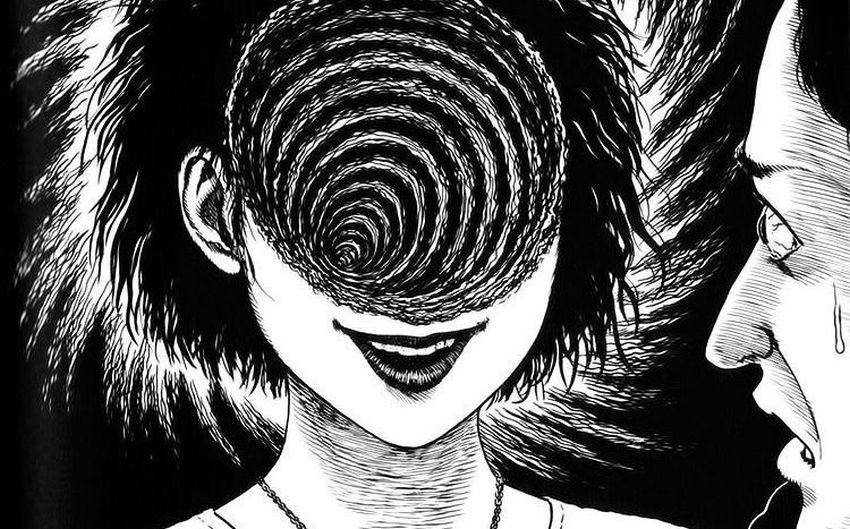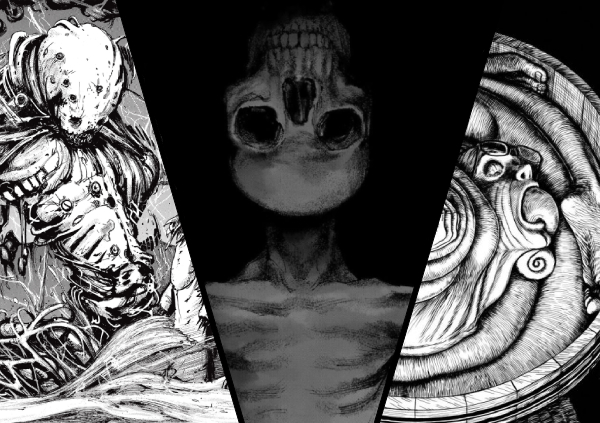As a horror fan, I’ve always been fascinated by the strange and surreal. Weird horror manga don’t just scare you, they warp your sense of reality. Whether through bizarre art, dreamlike narratives, or grotesque absurdity, these stories unsettle by defying logic itself.
This list is dedicated to the favorite weird horror manga I’ve ever read. If you’re looking for general horror manga recommendations, check out my list of the best horror manga.
Weird horror manga blend genres and break rules. They feature body horror, existential dread, and apocalyptic hallucinations. Yet they can also be black comedies, feature sci-fi absurdism, and moments of disturbing beauty. Some lean into chaos and nonsense, others into philosophical breakdowns or eerie quiet.

What ties them all together isn’t just horror, it’s disorientation. These are stories that twist your perception and leave you uncertain of what you just experienced.
From grotesque sci-fi epics to psychological spirals and meta-horror experiments, every manga here left me feeling profoundly weirded out.
Mild spoiler warning: I keep details vague, but it’s hard to describe the weirdness without a few specifics.
Here’s my curated list of my favorite weird horror manga (last updated: July 2025).
16. Fourteen
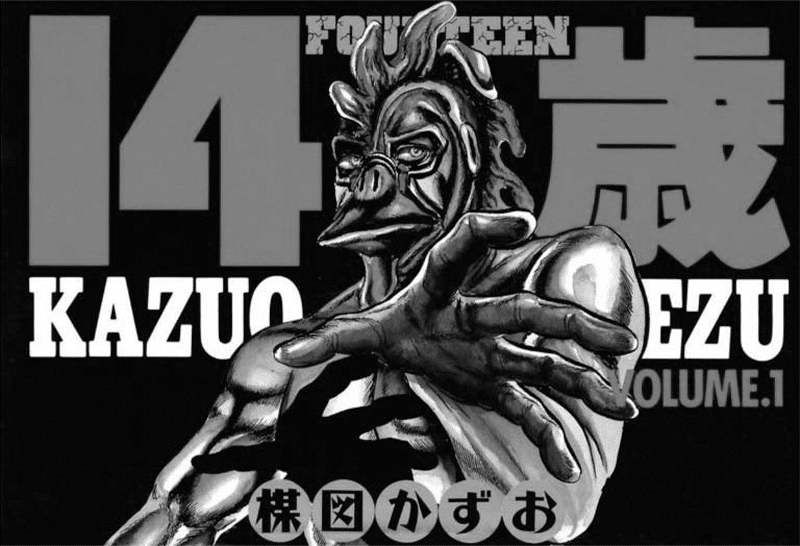
Kazuo Umezu is one of the most influential manga artists of all time, but nothing in his catalogue is as strange or deranged as Fourteen. It’s not just a weird horror manga, it’s one of the most surreal and nonsensical apocalypse stories I’ve ever read.
The setup alone is wild: a hyper-intelligent mutant named Chicken George is born in a chicken production factory. He soon declares vengeance on humanity for its cruelty toward animals and nature. This sounds weird enough, but it barely scratches the surface.
Fourteen feature green babies, all plant life on the planet being replaced by props, a T-Rex-shaped spaceship, a doomsday scenario, the richest person in the world turning into an eldritch abomination, and even a random alien invasion. And somehow, it’s all played completely straight. There’s no satire here, just pure, unfiltered ridiculousness presented with total sincerity.
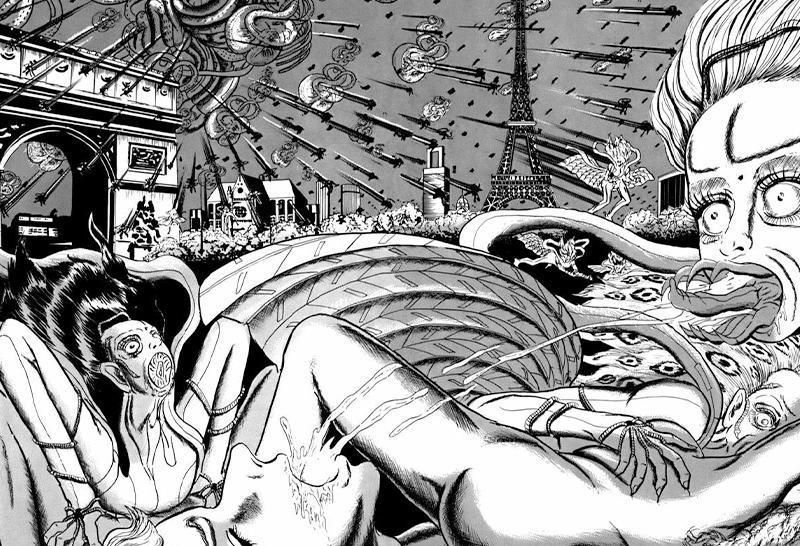
The art is old-school and ugly in a charming way. Umezu’s dramatic expressions and stiff layouts only make the madness more mesmerizing. It feels like watching a disaster in slow motion that keeps getting bigger, weirder, and louder with every chapter.
It’s ridiculous, chaotic, but also a blast to read. Fourteen is the type of horror that’s so bizarre it shouldn’t exist, and yet, somehow, you can’t look away.
Genres: Horror, Sci-Fi, Apocalypse
Status: Finished (Seinen)
15. Jagaaan
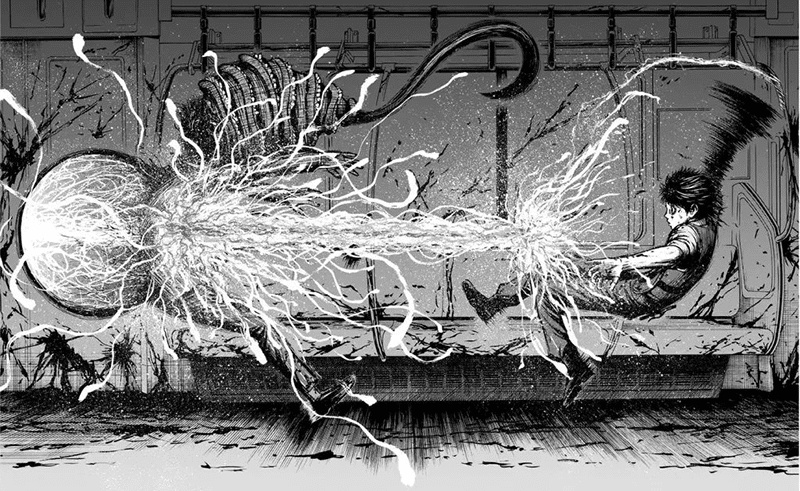
Jagaaan is a bizarre, grotesque, and unhinged horror-action series about a young cop who gains the power to shoot beams from his fingers. That alone would be weird enough, but this is a manga written by Muneyuki Kaneshiro, so it gets much weirder.
The manga begins with a rain of frogs falling over Tokyo, infecting people with repressed desires. Those who give into them become hideous monsters termed fractured you humans. Others, like our protagonist Jagasaki, become twisted anti-heroes who fight them. Jagan is equal parts body horror and psychological breakdown, with characters transforming into monstrous caricatures of their own lust, rage, or despair.
Visually, the manga is pure chaos. We bear witness to over-exaggerated and freakish expressions. Bodies mutate in increasingly deranged ways. There’s nudity, gore, gender-swapping, surreal absurdity, but also some more controversial themes that might disturb some readers.
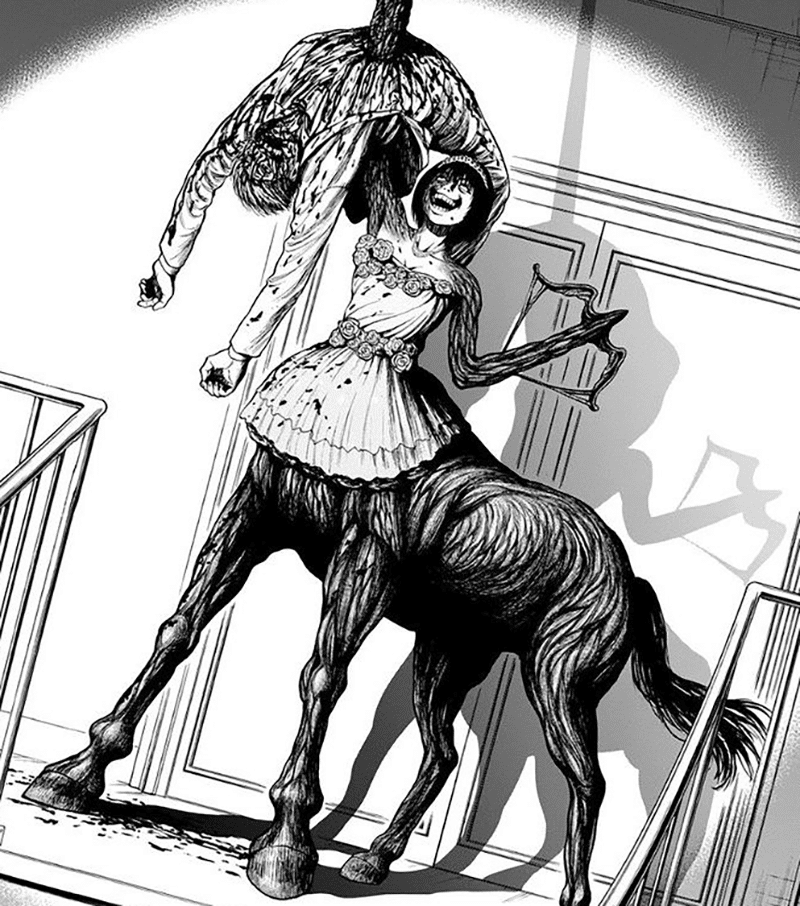
While the manga can occasionally lean into edgy or deranged territory, it never feels cheap. The weirdness is the point. Every fight, every transformation, is driven by desire spiraling out of control.
Jagasaki himself is one of the most twisted, yet strangely relatable protagonists in recent memory. He’s bitter, frustrated with his job, and morally questionable. Yet he grows throughout the story.
Equal parts disturbing, hilarious, and brutally entertaining, Jagaaan is the type of action horror manga that plunges deep into the absurd. It’s a depraved, weird, and wildly fun descent into madness.
Genres: Action, Horror, Supernatural, Comedy
Status: Finished (Seinen)
14. Kamisama no Iutoori and Kamisama no Iutoori Ni
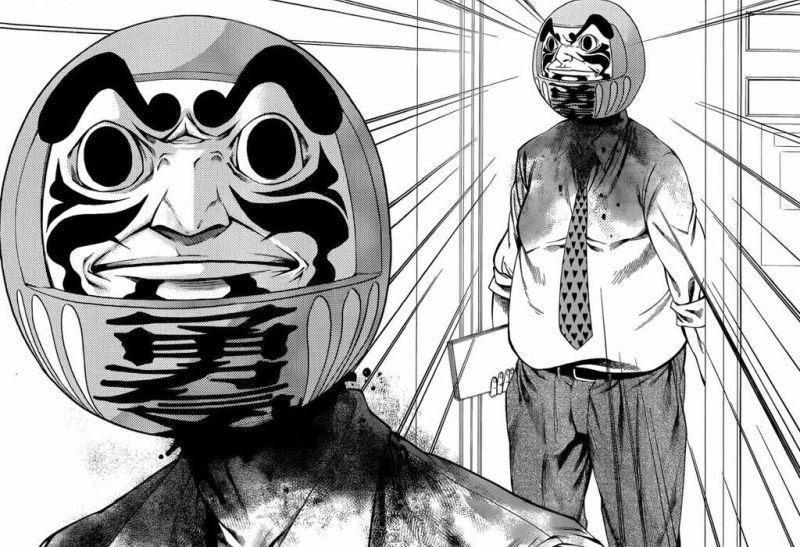
Another manga written by Muneyuki Kaneshiro and illustrated by Akeji Fujimura, Kamisama no Iutoori and its sequel are two of the weirdest, and most entertaining, death game manga out there.
It begins with a simple but shocking setup: one morning the head of Shun Takahata’s teacher suddenly explodes and a Daruma doll challenges the class to play a twisted version of a children’s game. Anyone who fails dies gruesomely.
From here on out, things spiral into a series of deadly games based on similar childhood activities. Yet everything is rendered surreal, violent, and absurd. Kamimaro, who’s overseeing the games, as well as his various assistants, act cheery and playful, all while students are being murdered and torn to pieces. It’s a masterclass in tonal whiplash.
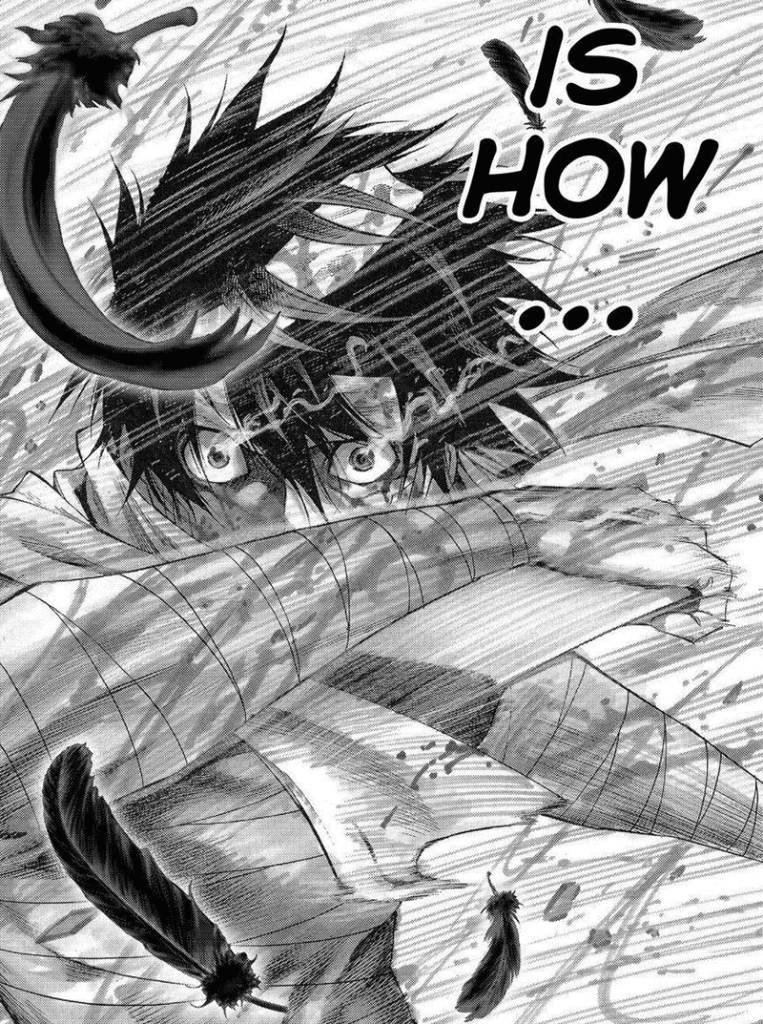
Yet what makes the manga stand out isn’t just the carnage, it’s the deranged characters. Ushimitsu and especially Amaya are amongst the most deranged and unhinged characters ever seen, and steal the show with their sheer unpredictability and madness. They are the embodiment of signature weirdness Kaneshiro brings to all his characters. Especially Ushimitsu stands out. While he starts out as similarly unhinged as Amaya, his character develops tremendously over the course of the series, becoming one of its most nuanced, yet still unhinged, protagonists.
The sequel, Kamisama no Iutoori Ni, dials everything up with better art, higher stakes and even weirder games. It eventually ties back to the first series, bringing the characters together for final games.
Weird, bloody, and absolutely addictive, Kamisama no Iutoori and its sequel are amongst the craziest death game manga out there, and amongst my personal favorites.
Genres: Horror, Action, Mystery, Psychological, Comedy
Status: Finished (Shonen)
13.Freesia
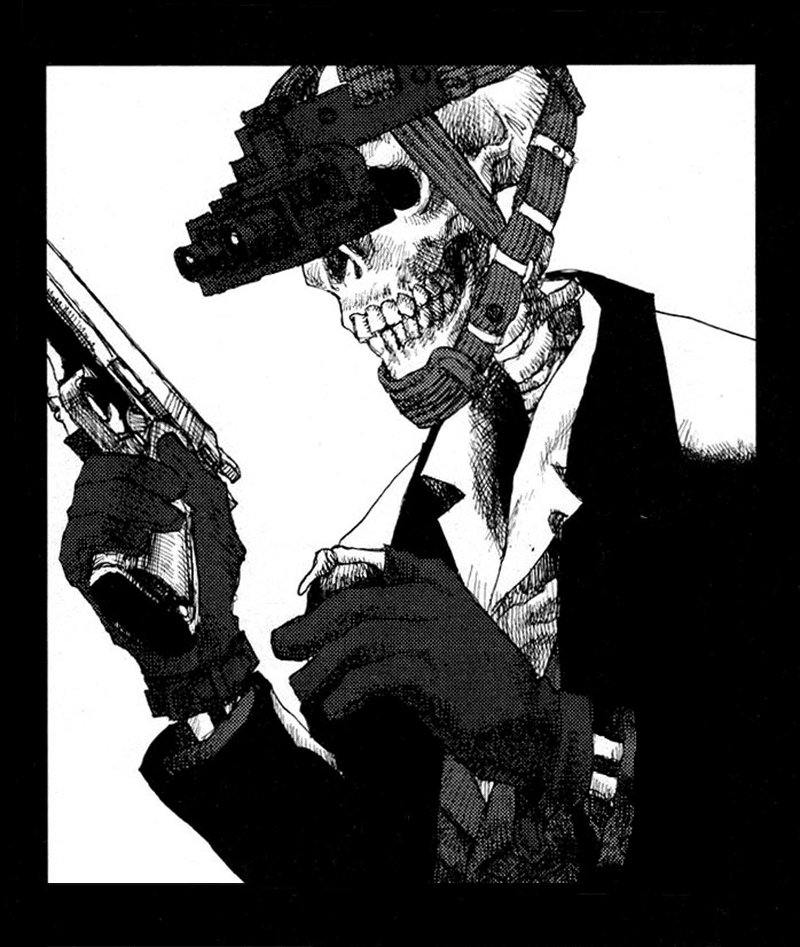
Set in a dystopian Japan where retaliatory killings have been legalized, Freesia sounds like a violent revenge thriller full of bloody shoot-outs. And yet, it couldn’t be more different. Freesia is much weirder, and much more unsettling than it appears, but not so much because of its content, but how it’s presented to us. We witness the entire story through the fractured mind of a man who no longer sees the world as it is.
Our protagonist, Kano, works for an agency that carries out retaliatory killings. He’s far from normal though, he suffers from schizophrenia, hallucinations, and memory loss. Freesia doesn’t just show us how he behaves, but it shows us the world he sees. This world is surreal, paranoid and disjointed, and you can never be sure what you see is real and what isn’t.
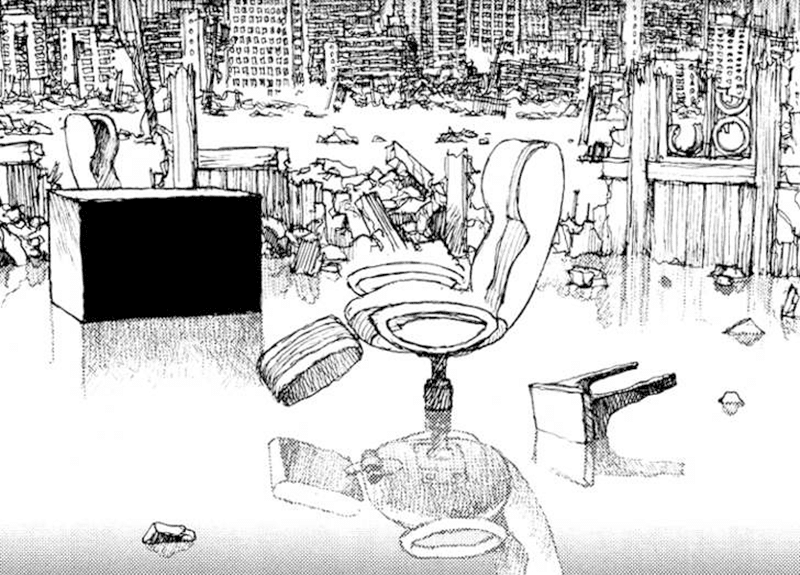
Yet Kano isn’t the only character who’s suffering from mental problems. Nearly every major character in Freesia is psychologically broken in some way, and their delusions bleed into the story itself. The standout here is Mizuguchi, who appears almost psychotic, and grows only more unhinged the longer the story continues.
Freesia is the type of horror that doesn’t disturb you with jump scares or gore, but by the sinking feeling that reality itself is unreliable. What seems like a grounded story about justice gone wrong slowly morphs into a dark, paranoid fever dream full of psychological breakdowns and emotional numbness.
It’s confusing, disorienting, at times even irritating, but intentionally so. Freesia is a brutal, brilliant portrayal of mental illness that traps you inside the mind of its most unstable character. It’s an experience unlike any other, and amongst the weirdest horror manga I ever read.
Genres: Psychological, Crime, Drama
Status: Finished (Seinen)
12. Keep on Vibrating

Keep on Vibrating is the second weird horror manga by Jiro Matsumoto on this list, and it’s far more unhinged than Freesia.
The manga doesn’t follow a single narrative. Instead, it’s a collection of short stories, some loosely connected, others completely standalone. What unites them is their sheer, unapologetic descent into surrealism, explicit violence, and sexual delirium.
Right from the first chapter, you know what you’re in for. It’s a fever dream of sex and gore that unfolds with little logic and even less explanation. As Keep on Vibrating continues, we follow characters who stumble through bleak, dystopian landscape while delivering deadpan, mundane dialogue. It’s disturbing, absurd, and completely unhinged all at the same time.
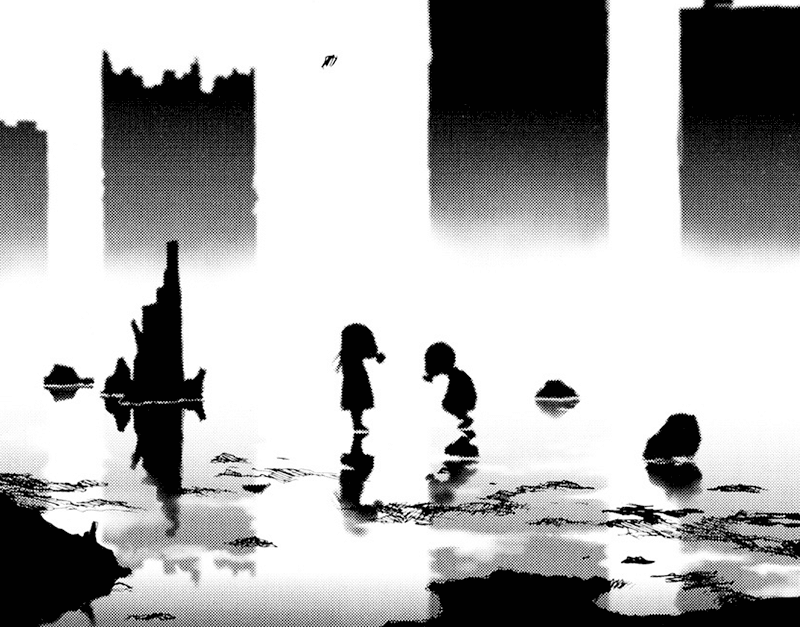
Matsumoto’s scratchy, gritty art style perfectly matches the dreamlike disorientation of these stories. While some chapters are more restrained, others plunge headfirst into graphic territory, testing the line between surrealism and exploitation.
There are moments of brilliance scattered throughout, flashes of emotional clarity or existential horror, but they’re buried under layers of narrative chaos. You’re not meant to understand. You’re meant to feel the discomfort, the absurdity and the quiet madness.
Brutally explicit, deeply surreal, and defiantly adult, Keep on Vibrating is one of the weirdest horror manga you’ll ever read. It’s not for everyone, but it’s a work that masterfully portrays psychological horror through the lense of sexual derangement and raw artistic instinct.
Genres: Horror, Psychological, Drama, Erotica
Status: Finished (Shonen)
11. BIBLOMANIA
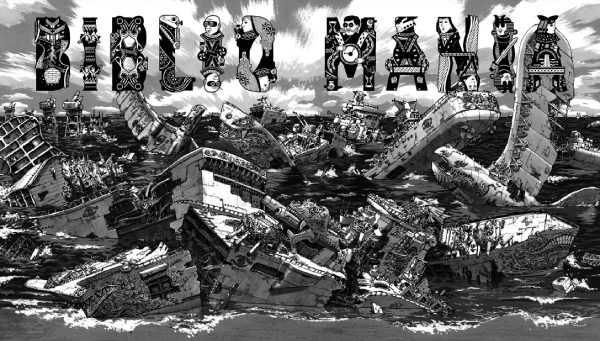
BIBLIOMANIA is one of the most visually striking and weird horror manga ever created. It’s a fever dream disguised as a story, and one of the most bizarre reading experiences I’ve ever had.
The plot follows Alice, a young girl who wakes up in Room 431 of a decaying manor. A talking serpent warns her not to leave or her body will rot. She ignores it and thus begins a surreal descent into a shifting mansion where every room feels like its own self-contained nightmare. She encounters deranged scientists, birdlike monsters, caped heros, and other inexplicable horrors, all while her body slowly mutates and changes into something monstrous.
At under 100 pages, BIBLOMANIA moves fast, but it’s never coherent int he traditional sense. The story feels more like an excuse to showcase the astonishingly detailed, grotesque imagery. It’s otherworldly and elegant at the same time. Alice’s cutesy, whimsical design only heightens the unease, clashing jarringly with the disturbing world around her.
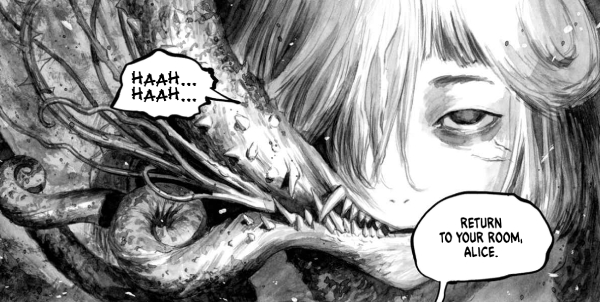
There’s clear inspiration from Alice in Wonderland, but BIBLIOMANIA is far less about the whimsy and far more about bodily destruction, loss of self, and pure artistic madness. The deeper Alice ventures, the less human she becomes.
BIBLIOMANIA’s bigger story, revealed in its final chapters, is even stranger than Alice’s journey through the mansion. Words can’t do justice how weird this manga truly is. It has to be experienced to be believed.
It’s a short, strange, and intensely visual. If you’re looking for something, that’s both elegant and horrifying, where the weirdness isn’t just in the story, but in every panel, BIBLIOMENIA is a must-read.
Genres: Horror, Fantasy, Drama, Psychological
Status: Finished (Seinen)
10. Wakusei Closet

Wakusei Closet begins like a dream but quickly spirals into a nightmare. Every time Aimi falls asleep, she finds herself transport to an alien, otherworldly planet. There, she meets Flare, another girl trapped in this strange place. Together, the two of them try to make sense of the rules, but also the monsters that govern this surreal world.
At first, the story feels almost whimsical. The art style is soft and rounded, the girls are cute, and the landscapes are beautiful. Yet soon after, one of Aimi’s classmates is devoured by a snake-like creature in the real world and reborn in the dream as a grotesque, Junji Ito-style abomination. From that point on, Wakusei Closet fully embraces body horror, cosmic terror, and a creeping sense of despair.
This is horror through contrast. The moe character design and warm tones clash violently with the story’s darker elements. We witness tentacled monsters, parasitic infections and surreal mutations. The manga constantly keeps you off-balance with tonal whiplash, combining heartfelt emotion with pure nightmare fuel.

Just when you think you’ve finally unraveled Wakusei Closet, the manga pulls off one of the most mind-bending twists I’ve ever read in a horror manga. It reframes everything and throws everything you thought you know right out the window.
Dreamlike, haunting and utterly strange, Wakusei Closet is a beautiful and disturbing story that deserves more attention and a truly weird horror manga.
Genres: Horror, Fantasy, Supernatural, Shojo Ai
Status: Finished (Seinen)
9. Homunculus
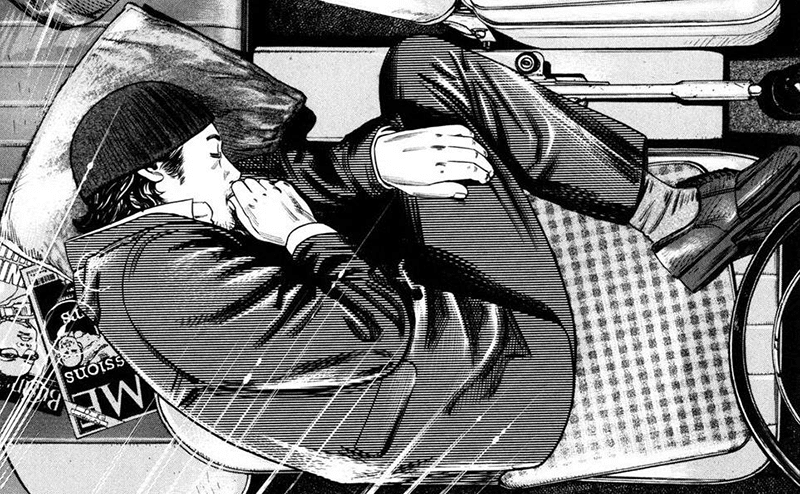
Homunculus begins with a weird medical experiment, and ends with something far darker and stranger than you could ever expect. Created by Hideo Yamamoto, this manga is part horror, part psychological deep-dive, and part surreal fever dream.
It starts with Susumu Nakoshi, a homeless man living out of his car. He agrees to participate in an experimental trepanation procedure, allowing a hole to be drilled into his skull in the name of consciousness research. What follows is a complete unraveling of his reality.
After the surgery, Nakoshi begins to see distorted, grotesque versions of people with his left eye. These are manifestation of their deepest traumas and insecurities, which come to be known as homunculi. As he interacts with them, the manga blurs the line between perception and delusion. Are these visions real? Or is Nakoshi descending into madness?
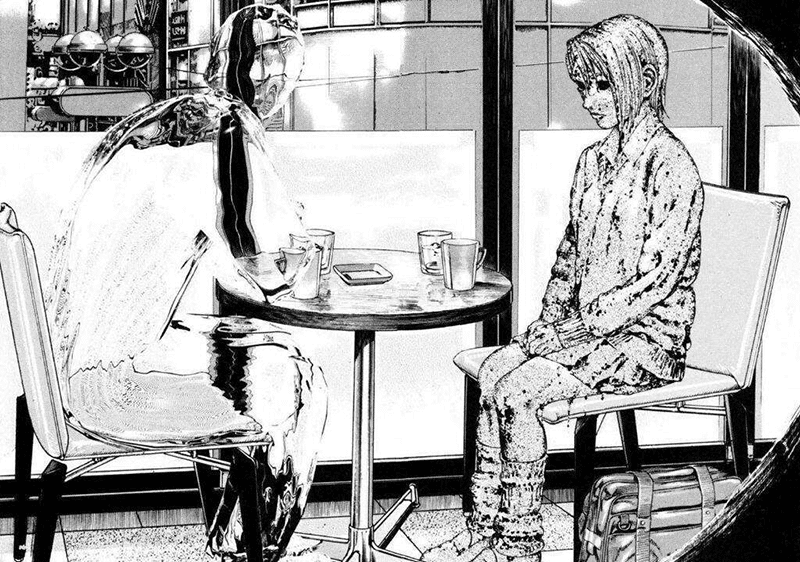
What makes Homunculus so weird isn’t just the body horror or the psychological themes. It’s the way the story evolves. What begins as a grounded, if strange, experiment quickly turns inward, becoming a disorienting and deeply uncomfortable character study. The narrative becomes unpredictable, fragmented, and disturbing in both visual and thematic ways.
Yamamoto also doesn’t shy away from explicit scenes. Some of them are jarringly bizarre, others viscerally disturbing. Yet they all serve a purpose, digging into suppressed identity, shame and human frailty.
Homunculus is an uncompromising work of surreal psychological horror and one of the most unique, unsettling and weird horror manga I ever read.
Genres: Horror, Psychological, Philosophical, Drama
Status: Finished (Seinen)
8. Dorohedoro
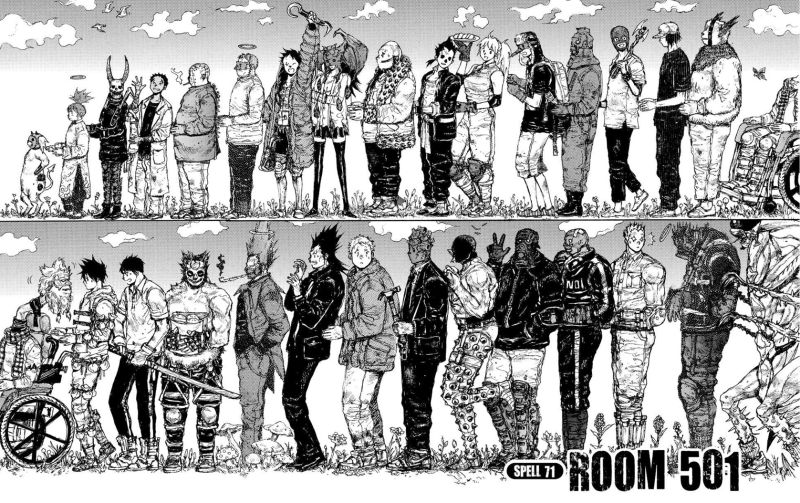
Q Hayashida’s Dorohedoro is one of the weirdest horror manga ever created, but also one of the best. It’s violent, grim, surreal and yet somehow cheerful at the same time. Few manga can swing between brutality and absurdist comedy with such chaotic energy.
The story follows Kaiman, an amnesiac man with a reptilian head who lives in Hole, a derelict city constantly invaded by sorcerers to test their powers on the local population. These experiments often leave people transformed, disfigured, or dead. Kaiman believes a sorcerer caused his condition, and he hunts them down relentlessly to uncover his identity.
This setup is already strange enough, but Dorohedoro quickly evolves into something far weirder. As the story unfolds, it mutates from a revenge mystery into a reality-warping epic full of conspiracies, cosmic magic, and body horror that spirals into outright carnage.
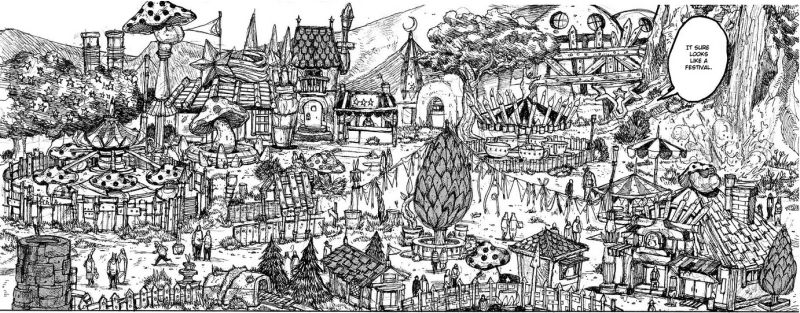
What makes Dorohedoro so distinct is the tonal whiplash. It’s horrifying, hilarious, and emotionally rich, often at the same time. Heads get crushed, bodies mutate, limbs fly, but it’s all rendered in this strangely humorous way. One moment you’re watching a massacre, in the next a character throws out a deadpan joke that makes you burst out laughing.
The visuals are jaw-droopingly detailed and completely original. Hayashida’s art style mixes grimy decay with vibrant energy, and her character design ranges from adorable to absolutely monstrous. The Sorcerer’s World stands out especially. It feels like a surreal nightmare-fairytale hybrid, filled with outlandish fashion and grotesque creatures.
Dorohedoro is a surreal masterpiece. It’s a disturbing, funny, and a deeply weird horror manga that’s unlike anything I read before.
Genres: Horror, Fantasy, Supernatural, Mystery, Slice of Life
Status: Finished (Seinen)
7. Fire Punch
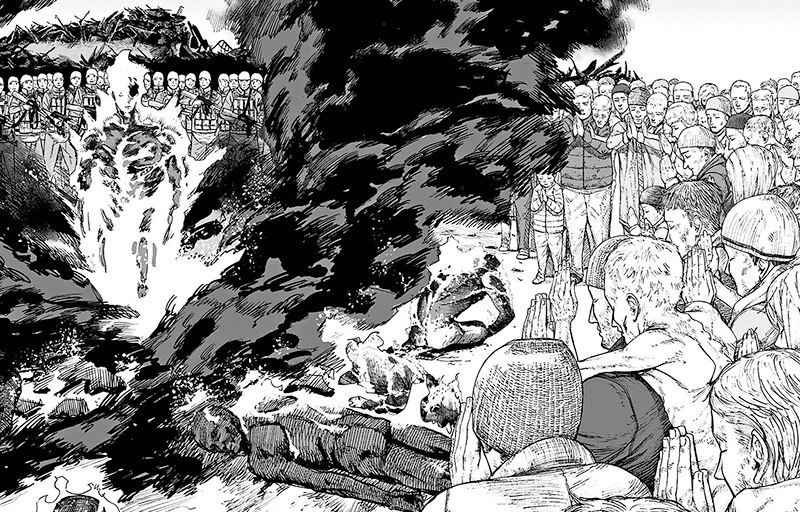
Fire Punch is pure tonal chaos. It’s bleak and brutal, but also an extremely weird horror manga. What starts out as a revenge story soaked in misery gradually transforms into a self-aware meta-satire before ending in one of the strangest final chapters I’ve ever read.
The setup is disturbing: the world has become an endless frozen wasteland after the arrival of the Ice Witch. Agni and his sister, both blessed with regenerative powers. They live in a small community, but their peace ends when army commander Doma incinerates the village with his eternal flames. Agni survives, but is now locked in a state of permanent regenerating immolation. In agony but unkillable, he becomes a walking inferno bent on revenge.
So far, it’s an edgy post-apocalyptic horror story dripping with body horror, cannibalism, and despair. Then comes Togata, a movie obsessed immortal who decides to make a film out of Agni’s life. From this point on, Fire Punch takes a sudden turn into absurdity.
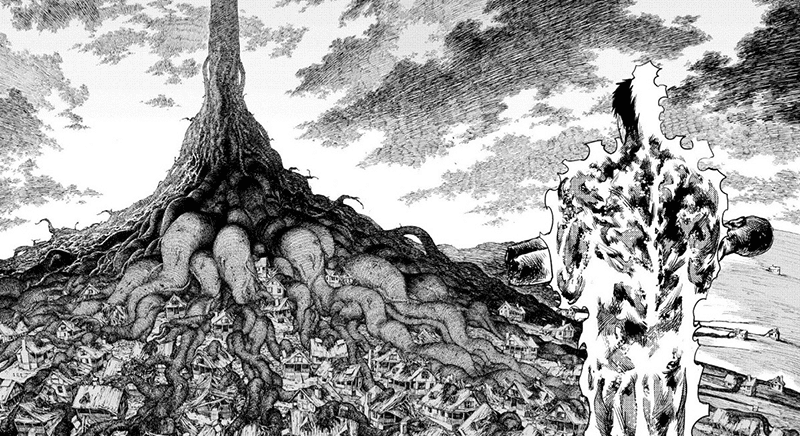
The manga becomes self-aware, poking fun at its own plot points, subverting clichés, and even breaking the fourth wall. It’s part satire, part anti-shonen deconstruction, and part in-joke. It’s the weirdest tonal whiplash I ever encountered in manga.
Fujimoto’s sketchy, cinematic art style reinforces the dissonance further. Wide panels showcase desolate wastelands, only interrupted by surreal events, sudden gore, or absurd gags. The story constantly shifts, from horror to dark comedy to philosophical musings. By the time you reach the end, it’s almost unrecognizable from where it started.
Fire Punch is disturbing, nihilistic, meta, and utterly bizarre. It’s a surreal fever dream of contradictions, and that’s exactly why it belongs on a list of weird horror manga.
Genres: Horror, Gore, Post-Apocalyptic
Status: Finished (Shonen)
6. Franken Fran
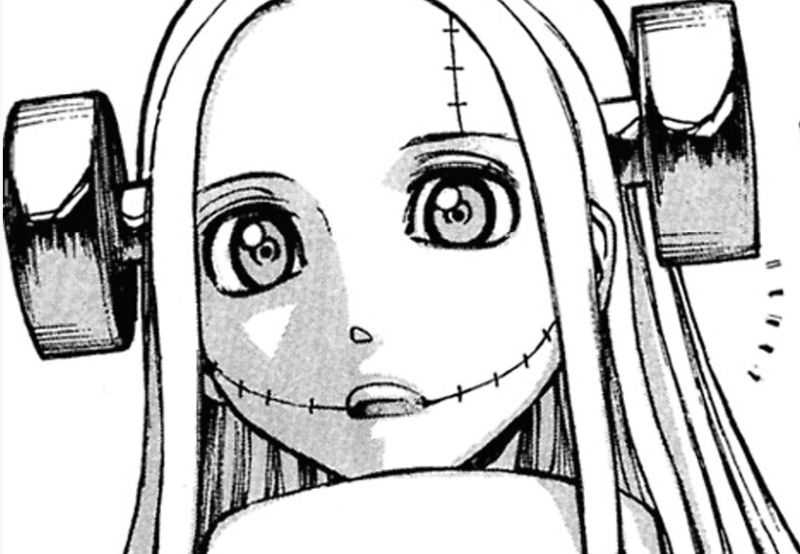
Franken Fran is medical horror at its most unhinged. Created by Katsuhisa Kigitsu, this episodic manga stars Fran, a stitched-up girl created by a legendary surgeon. After he vanishes, it’s up to her to carry on his legacy through a never-ending series of grotesque operations.
Each chapter is its own bizarre little nightmare. Someone comes to Fran with a problem, be it illness, deformity or a desperate wish for change, and she offers a solution. The results, however, are rarely what they expected. Whether it’s turning a person into a bug, giving someone a perfectly cloned body, or rearranging organs in the name of beauty, Fran always delivers, just not the way the customers want.
What makes Franken Fran so weird isn’t just the extreme body horror, though there’s plenty of that. Kigitsu depicts surgeries in graphic detail: skulls are opened, flesh is sliced, skin is peeled, and intestines are exposed. What truly sets it apart is the tonal whiplash.
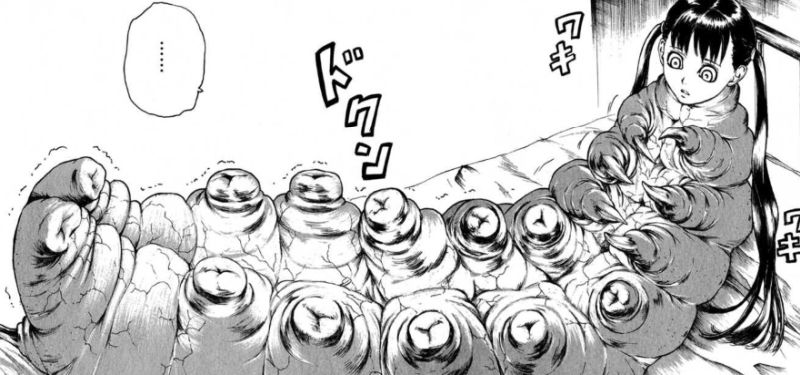
Fran herself is cheerful, energetic, well-meaning, and completely unfazed by the horror she causes. One moment the manga is disturbingly heartfelt, the next a satire of modern vanity and scientific ambition before plunging you in the straight-up grotesque.
It’s a contradiction by design, comedy and carnage stitched together just as Fran is. Some chapters are deeply disturbing; others are weirdly poignant. A few are darkly funny. Not every story hits, but it’s the sheer creativity on display that makes Franken Fran so unforgettable.
Whether you’re here for medical madness, the Frankensteinian theme, or the bizarre ethical question it raises, Franken Fran is one of the weirdest horror manga ever created.
Genres: Horror, Science / Medical, Sci-Fi, Comedy (Shonen)
Status: Finished (Shonen)
5. Dai Dark

Dai Dark is what happens when Q Hayashida decides to write a space adventure and turns the absurdity up to eleven.
Zaha Sanko’s bones can grant any wish. Thus, he becomes a prime target across the galaxy. Instead of making this a tight survival horror, Hayashida turns this into a sci-fi splatter comedy. Dismemberments are casual, bone-harvesting is routine, and space is a giant junkyard full of freaks.
Sanko and his crew, Avakian, Shimada Death and Damemaru, murder their way through space while cracking deadpan jokes, and acting like a group of lighthearted troublemakers out on a stroll. Dai Dark is ultra-violent, but delivered with such gleeful energy that it loops back around to being hilarious.

It’s this tonal dissonance that makes the Dai Dark such a weird horror manga. We see heads explode, flesh melt, and people being ripped apart, but the tone is entirely comedic, almost nonchalantly casual. The world of Dai Dark is nightmarish, full of cosmic horrors, but everyone behaves like they are in a Saturday morning cartoon.
The art is phenomenal. Hayashida’s signature grime, body horror, and intricate designs are taken to new heights. Storywise, it’s loose, almost episodic, as if Hayashida is only interested in piling on weirdness than building a coherent narrative. And yet, this is part of its charm.
Dai dark is a bizarre, hyper-violent joyride through the ugliest parts of space. It’s gory and grotesque, but also utterly goofy, making it one of the weirdest horror manga out there, even outshining its predecessor Dorohedoro.
Genres: Horror, Sci-Fi, Comedy, Action, Adventure
Status: Ongoing (Shonen)
4. Nijigahara Holograph

Nijigahara Holograph is arguably Inio Asano’s most structurally bizarre and narrative cryptic manga. It’s a fever dream of trauma, time loops, and surreal storytelling that defies conventional interpretation.
On the surface, it’s about a boy named Suzuki, a girl named Arie who was thrown down a well by her classmates, and strange butterflies appearing all over town. But this is just the beginning and barely scratches the surface.
What truly makes Nijigahara Holograph weird is how it tells its story. There’s no clean linear arc, no reliable narrator and very little exposition. The story constantly shifts timelines and jumps between broken characters. Events repeat, echo, or vanish entirely.
Nijigahara Holograph is maddening on its first read. A single panel or entire chapter might make no sense, but on a reread, you might discover what it means, how it’s related, and you slowly begin to unravel the manga’s complex narrative.

Thematically, it’s one of Asano’s darkest works. It features incest, rape, bullying, suicide, murder, and it’s all handled with unsettling detachment. Generational trauma haunts the narrative, infecting character after character like a curse that can never be broken.
And yet, there’s something dreamlike and deeply philosophical about it. The recurring motif of the butterflies echo’s Zhuangzi’s butterfly dream, showcasing the depth and ambiguity of the work, which has led to a wide array of interpretations online.
Nijigahara Holograph is not an easy manga. It’s an experience that demands rereading, close attention, and a tolerance for ambiguity, and even then it might not make sense. Still, if you’re looking for something truly weird, dark, and experimental, it’s one of the most uniquely disturbing horror stories the medium offers.
Genres: Drama, Mystery, Psychological, Tragedy
Status: Finished (Seinen)
3. Hanging Balloons
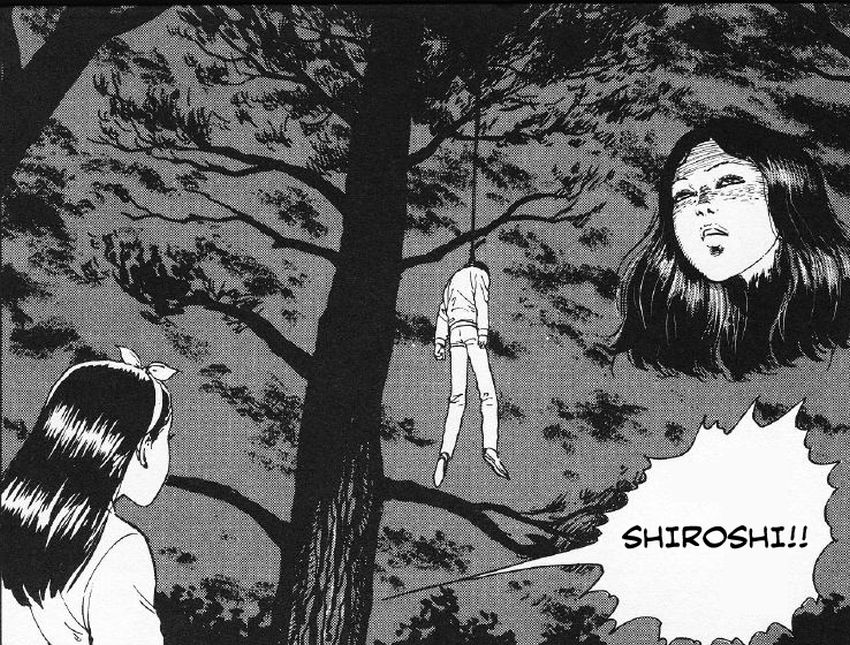
Hanging Balloons is one of the most bizarre apocalyptic horror stories Junji Ito ever created. What begins as a grounded tale about the suicide of a beloved idol quickly spirals into surreal, inexplicable nightmare fuel.
The story follows Kazuo, whose friend Terumi, a famous idol, is found dead, hanged in a grotesque public display, her body suspended from a noose made of metal, wrapped around electrical wires. Afterwards, rumors of her ghostly head drifting around the city are shared. The truth, however, is even stranger: it’s not a ghost, but a massive floating replica of her head.
Soon, more of these enormous balloon heads appear, each bearing the exact face of its target. They call out your name before they chase you down, all to hang you from the noose attached to them.
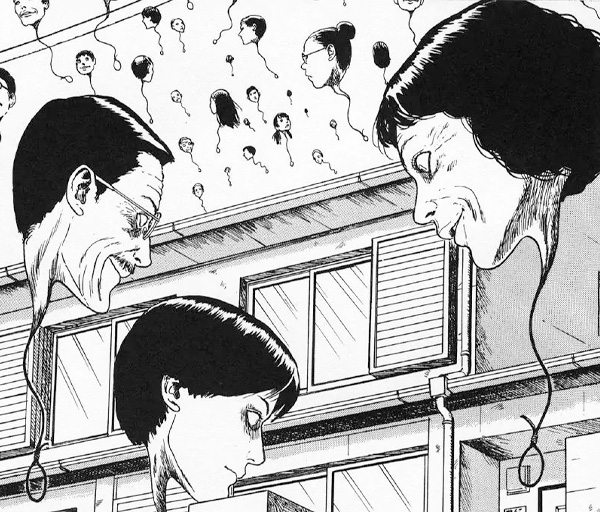
Resistance is useless. Even destroying the balloons means death for the person it represents. There’s no fighting back. Even worse, no explanation is given. The story spirals into bleak absurdity, a quiet apocalypse in slow motion, where people drift through the skies, hinging from balloons of their own likeness.
It’s a masterpiece of tonal dissonance. The imagery is comically absurd, but the execution is disturbingly grim.
Some interpret the story as a commentary on idol culture, celebrity suicide and even a metaphor of Freud’s death drive (Todestrieb), that the urge toward self-destruction lies within us all. Yet Ito gives us no answers. It’s horror at its most inexplicable and surreal.
No matter how you read it, Hanging Balloons is one of the weirdest horror manga out there, but also one of the most unforgettable.
Genres: Horror, Apocalypse, Psychological
Status: One-shot (Seinen)
2. Abstraction

Abstraction is one of the most radical and bizarre manga ever created. A standalone one-shot by Shintaro Kago, it’s not officially available in English, but for those interested in experimental manga, it’s essential reading.
The story begins innocently enough: a couple at the beach, a lost ring, and a dive into the ocean. But on page two, it becomes clear that this isn’t a typical manga, not even for Shintaro Kago. What we witness instead is a deconstruction of the medium itself.
Panels are depicted as three-dimensional boxes. Characters crawl into and out of them. Scenes are acted out by grotesque stand-ins: stitched together hands, furniture with eyes, ambulatory genitals, malformed combinations of heads and limbs. The narrative is literally performed by these fleshly abstract creatures moving through the page like stagehands in a horrifying fever-dream.

The actual plot is nonsensical erotic schlock, nothing but an excuse for visual experimentation. There’s graphic nudity, sex, and later brutal violence. But the true star here is form. Abstraction explores manga not as a story, but as a performance, a visual illusion, and then tears it apart.
As things spiral into violence, the performing creatures themselves fall apart. They drag their mangled bodies from one panel-box to the next, soaked in blood, barely able to even perform anymore. It’s the most bizarre, nightmarish but creatively experimental work I’ve ever seen.
In the end, Abstraction is not about characters, story or even narrative. It’s a work of pure, transgressive meta-art. It’s absurd, shocking but absolutely brilliant and an utterly weird horror manga.
Genres: Horror, Psychological, Erotica
Status: One-shot (Seinen)
1. Soil
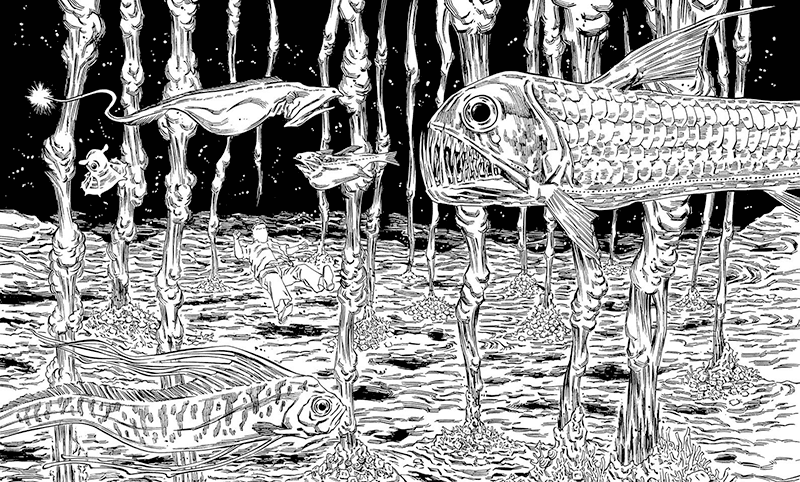
Soil by Atsushi Kaneko is not just a weird horror manga, but one of the weirdest manga ever created.
The plot begins with the disappearance of a family in the clean, suburban utopia of Soil New Town. Two detectives, the unpleasant and increasingly unstable Yokoi and the more composed Onoda, arrive to investigate. What follows feels like a typical crime thriller… for the first volume.
After that, the cracks begin to show. The mystery slowly deepens. Events don’t add up anymore, and what started as a routine case becomes something utterly incomprehensible.
What truly makes Soil weird is how completely it descends into madness. Scenes become dreamlike and irrational. Questions pile up but are never answered. Plot threads dissolve. And before long, Soil New Town warps itself, and changes into a Lovecraftian fever dream.
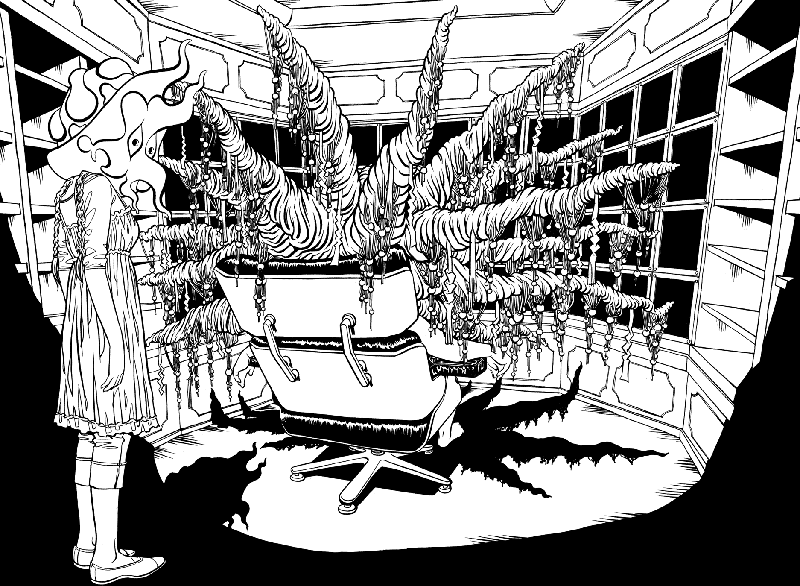
The art reflects this shift. It starts off feeling stiff and minimal, but as the story devolves, it becomes deeply expressive, grotesque, chaotic, and abstract.
By the final volumes, Soil stops being about what happened, and becomes an exercise in bizarre atmosphere and surreal imagery. There are no answers, only one bizarre event after another, but that’s how it’s meant to be. Soil isn’t about resolutions, it’s about losing your footing, and losing it completely.
Equal parts baffling, brilliant and incoherent, Soil is one of the strangest manga I ever read. It’s a surreal fever dream that drags you down by its uncanny atmosphere before spitting you back out, utterly confused. If you’re looking for the weirdest manga ever published, Soil is a worthy contender.
Genres: Horror, Crime, Mystery, Psychological, Philosophical
Status: Finished (Seinen)
